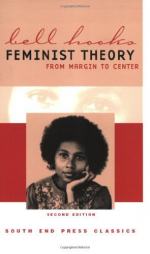
|
| Name: _________________________ | Period: ___________________ |
This test consists of 5 multiple choice questions, 5 short answer questions, and 10 short essay questions.
Multiple Choice Questions
1. What name did early feminists use to describe radical, or revolutionary, feminists?
(a) Naive.
(b) Spoilers.
(c) Sisters.
(d) Traitors.
2. What question does the author raise about the desire for equality with men?
(a) Why do women want equality with men?
(b) How come more women don not see the value in imitating male models of power?
(c) When will men decide to share their power?
(d) There are degrees of "equality" within the male gender, so with which men are women supposed to want equality?
3. What did she notice about white female students at the time?
(a) They were afraid to look at each other in class.
(b) They were at college in order to find husbands.
(c) They were very excited about creating community and being together.
(d) They were not very smart.
4. What is the primary "point of contact" between the oppressor and the oppressed?
(a) Marriage.
(b) The work environment.
(c) There is very little actual contact.
(d) Absence of choices.
5. Which elements define the ideal family for the author?
(a) Order, respect, and privacy.
(b) Order, unity, respect, and fairness.
(c) Unity, modesty, and communication.
(d) Support, respect, unity and community.
Short Answer Questions
1. What does the author say about the statement: "I am a feminist"?
2. According to the author, how has the relationship between feminism and the family often been portrayed?
3. What did these early feminists forget to take into account in their beliefs about men?
4. What was the shared feeling that helped define sisterhood in the early years of the movement, according to the author?
5. In the first chapter, how does the author characterize the perspective of the women involved in the early feminist movement?
Short Essay Questions
1. In the author's view, are feminists ambivalent about power?
2. Is true sisterhood, i.e. solidarity in the struggle to achieve feminist goals, supported by society, according to the author?
3. How does the author discuss feminists views on housework?
4. What is unique about black women's perspectives?
5. What is the author's view of feminism as a social movement in the Preface to the First Edition (1984)? What kind of movement does it need to be and why?
6. Overall, what do Chapters Two and Three develop for the reader with regard to feminism?
7. Does the author still believe in her work?
8. Is the author clear about her position on women who define feminism as seeking equality with men?
9. In Chapter Eleven, why does the author disagree with early feminist concepts of sexual liberty?
10. What is the author's approach to discussing feminism in Chapter Two, "Feminism - A Movement to End Sexist Oppression;" i.e. how does she structure the chapter?
|
This section contains 887 words (approx. 3 pages at 300 words per page) |

|




